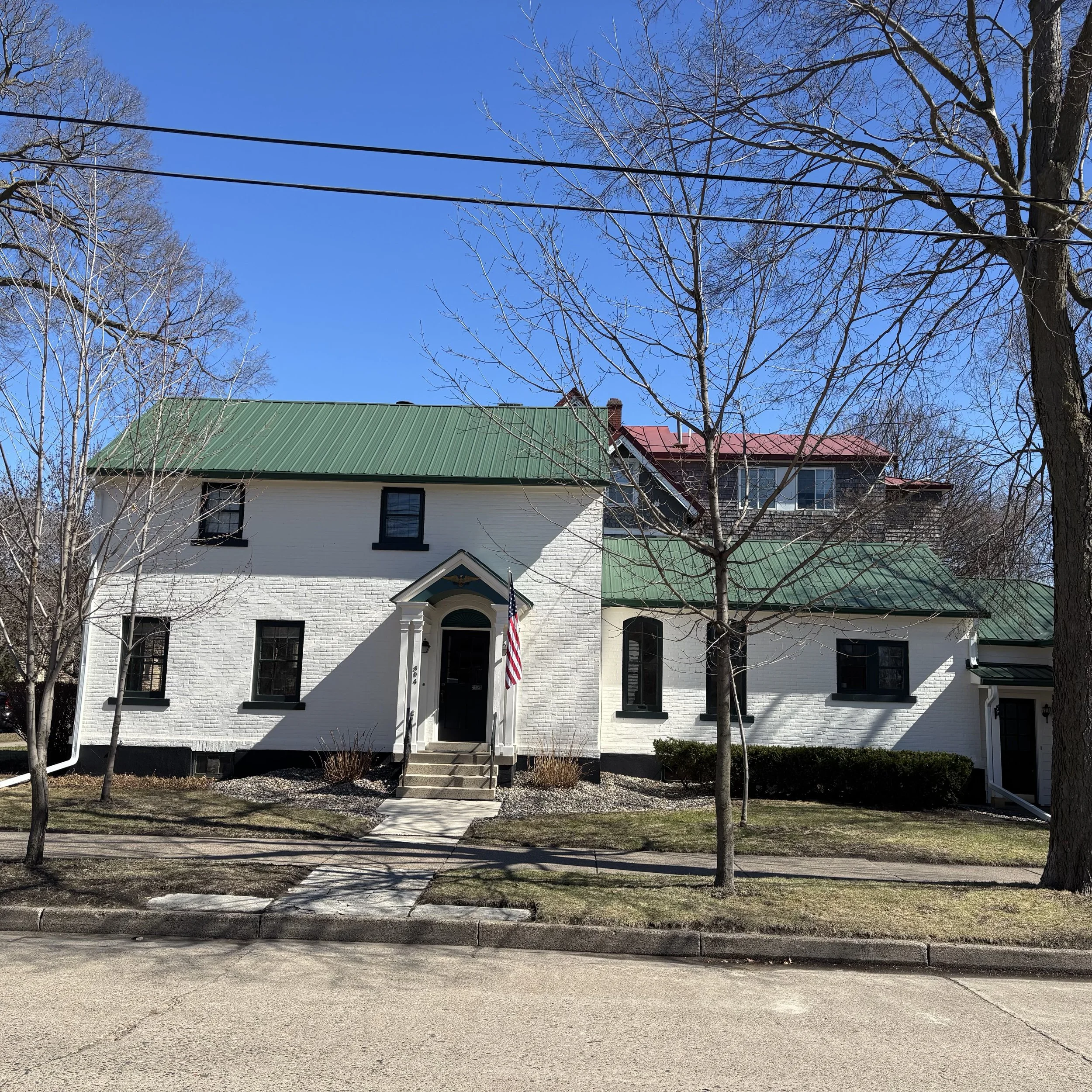304 Grand 1886
304 Grand 1886
Herman Polzin, 427 West Broadway, a retired North Western railroad man, dies at 8 pm at the Winona General Hospital after a long illness. He was 84 years old. Mr Polzin was taken to the hospital a few days prior to his passing. He was a resident of Winona for 71 years. Surviving are his wife, Minnie Mueller Polzin, and one sister, Mrs Ricka Shellin of Rochester. Funeral Services will be conducted at St Martin’s Lutheran Church, and burial will be in St Mary’s Cemetery.
Mr Polzin was born in Germany and came to Winona when he was 13 years old. At the age of 19, he was employed as a driver for the Laird Norton Company, and when he was 20, he obtained work as a wiper on the old Winona and St Peter Railroad. At the end of two weeks, he was given a job as a fireman, running the west side of Winona. At that time, there was no permanent bridge across the river, and no rail service was operated east of the city. Mr Polzin was fired for nine years and then became an engineer. During his career, he worked continuously and pulled trains into every station from Winona to Tracy and from Winona to Chicago.
About 14 years before his retirement in 1919, Mr polzin was given the yard engine in the local machine shop.
Mr and Mrs Polzin were married on July 29, 1979, and celebrated their golden wedding anniversary with relatives in Chicago. Mr Polzin worked for 43 years. Mr Polzin erected a brick building dwelling on the southeast corner of West Broadway and Grand Street in 1886. He piloted a world’s fair train into Chicago in 1893.
Thursday, January 2, 1936
Mrs Herman Polzin dies in Chicago
Mrs Herman Polzin of 427 West Broadway died Tuesday in Chicago, where she had gone the Monday before Christmas to spend the remainder of the winter with her sister, Mrs Josephine Weber. Death was thought to be due to a heart attack. Mrs Polzin, who was thought to be about 80 years old, had been in poor health for some time. Mr Polzin, who died March 31, 1934, and Mrs Polzin were married July 29, 1879, in Winona and celebrated their golden wedding anniversary in 1929 in Chicago. The only near-survivor is Mrs Webber
On April 13, 1936
Roy Sorenson was granted a permit to remodel 427 West Broadway, which sits at the corner of Grand and Broadway. Improvements planned by Mr Sorenson, upon the architectural advice of his own firm, Boyum, Schubert and Sorenson, will cost an estimated $900. Seidlitz-Schwab & Company is the contractor. Mr Sorenson purchased the home from the Polzin estate.
Mr Sorenson will have a new bathroom in the house, which he plans to make his home. There will be a new kitchen arrangement with a breakfast room. A porch is being torn off the Broadway side of the house, with the entrance moved over to Grand street. Wrought iron railings will be mounted on the concrete steps for this entrance. In place of the old porch on the Broadway side of the house, Mr Sorenson will build a bay window. Another small porch will be taken from the Grand Street side of the house, and larger windows will be installed through out. The house will have six rooms, a washroom, and a bathroom. There will be a large reception hall and library. A forced air system will make the home air-conditioned. The new arrangement requires ripping out the old partitions. A new brick chimney will be built to the building from the ground up, and a garage will be erected and added to the house. The improvements will make the home into a colonial styled structure.
October 21, 1946
Roy Sorenson, 304 Grand Street, made an addition of one additional stall to the current one-stall garage. The addition was a tandem addition.
A front porch, 14x16 feet in dimensions, will be attached to the residence of Roy Sorenson, 304 Grand Street, by Seidlitz-Schwab & Company. The project is estimated to cost $500, and tin roofing, frame materials, and concrete materials will be used.
Monday, July 16, 1966
Tom Kraut, 304 Grand Street: $600 for the enclosure of a porch by Earl Laufenberger
The Georgian house is usually a simple one or two-story box, two rooms deep. The side gabled roof occurs in the northern and middle colonies. About 40% of Georgian Colonials are found to have a side gabled roof. The Brick construction with the triangular hooded front door of 304 Grand Street is common in the Middle Colonies.

